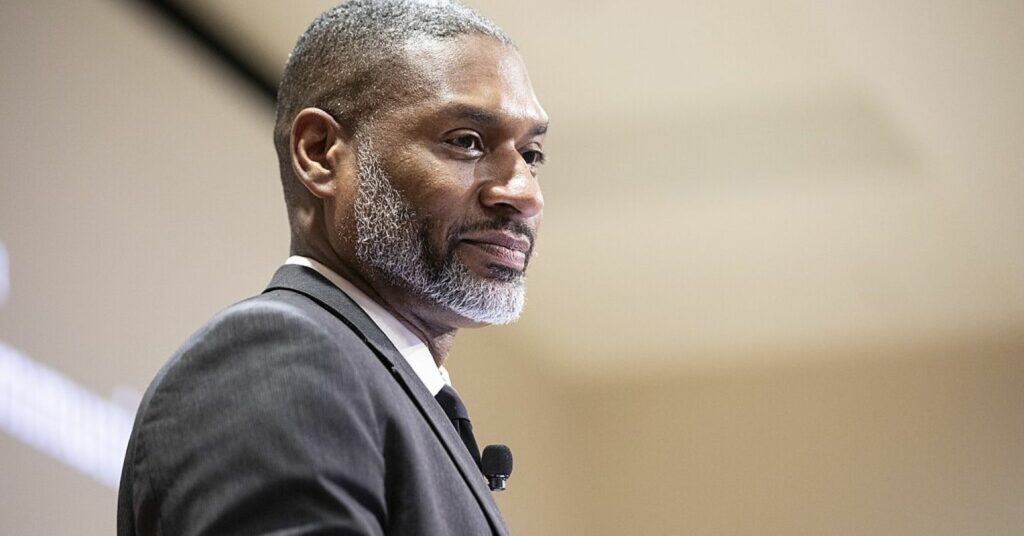Bi men clearly exist but Gen Z’s youths vary from Gen X’s adults.
In a 2022 Pew Research Center Poll, 5 percent of Americans identify as bisexual. Comparing across generations and the sexes, 12 percent of Generation Z say they’re bisexual, but only 1 percent of Generation X identify as bisexual. Across all generations, far more women than men identify as bisexual, and this is especially true among Generation Z youths. Thus, the answer to the question “Do bi men exist?” is clearly yes; less evident is whether the generational difference among men is reflected in the affirmation of bisexuality.
article continues after advertisement
Two men who are attracted to both women and men reveal the drastic changes that have occurred from Generation X to Generation Z in the acceptability of bisexuality among men. Writer Charles Blow, age 53, grew up in a time when “[Bisexuality]would seem to me woefully inadequate and impressionistically inaccurate.” Woody Cook, age 23, believes “this is sort of the age of bisexuality… It’s a thing on its own.”
Why the difference?
A silenced bisexual teenager in the 1980s, Gen X’s Charles Blow, author of Fire Shut Up in My Bones: A Memoir, grew up in rural Louisiana where being a Black bisexual man was certainly not a prestigious standing. According to a 1977 Gallup Poll, less than 15 percent of the US population believed being gay was something a person is born with or that gay people should be allowed to adopt children. For Blow, although bisexual “was technically correct, I would only slowly come to use it to refer to myself, in part because of the derisive connotations.” One major dilemma for Blow was that adopting a bisexual identity “reduced a range of identities, unbelievably wide and splendidly varied, in which same-gender attraction presented itself in graduated measures, from a pinch to a pound, to a single expression.” In this regard, Blow was prescient of youth to come 30 years later.
One of those was Gen Z’s Woody Cook, an internet personality who has been a beneficiary of a generational transformation of what constitutes bisexuality. He disclosed his bisexuality not as an adult but as a 15-year-old, and in the process gained clarity and authenticity. Now, the Gallup Poll reports 70 to 90 percent of U.S. adults support LGB individuals in a number of categories, including 75 percent who agree LGB “should be able to adopt children.”
article continues after advertisement
Though recalcitrant bisexual stereotypes unmistakably persist, leading some young people to struggle for self-acceptance as a bi person, many others thrive by overcoming cultural erasure and denial. They have done this because of radical changes experienced by Generation Z and by our increased understanding of sexuality as a spectrum. In regard to the latter, recent research has established the following:
Very few young men, including those who identify as bisexual, have an equal attraction to males and females. They might have a slight or major component of bisexuality—a spectrum of sexuality from the cusp of straightness (perhaps identifying as mostly straight) to the cusp of gayness (perhaps identifying as mostly gay). These individuals frequently have the capacity for fluctuation over time and context, perhaps identifying as fluid rather than as bisexual. All are, however, bisexual in their attraction to both sexes.
One common fear of previous generations of men—which remains too prevalent today, especially among straight male youths—is that having a slight degree of same-sex attraction means they are gay or headed in that direction. Such recognition does not necessarily mean they are confused about themselves, are biphobic, or are hiding from their real sexuality. It might simply mean they are complex creatures and that many men experience a variety of sexual and romantic attractions (e.g., best buddies connected for life; childhood or adolescent sex play).
A singular bisexual identity is inadequate to reflect the remarkable kaleidoscope of sexual and romantic attractions Generation Z youths experience. Among many identifications adopted either temporarily or not include pansexual, fluid, queer, bicurious, nonbinary, questioning, no label, and many more. Some refuse to assume an identity and merely describe their sexual and romantic desires.
The prevalence of bisexuality among young men is considerably higher than national estimates (2 to 3 percent) when the “uncounted,” those lost to researchers, are included. These include individuals who refuse to identify with the listed options, skip the sexual orientation question, identify as mostly straight or mostly gay (who are technically bisexual), insert some other term, such as “queer” or “biromantic,” or are jokesters who fail to take the researcher’s questionnaire seriously.
Research clearly reveals that the vast majority of bisexuals lead normal, healthy, fulfilling lives with hope for the future. In this regard, Gen Zers echo Gen X’s Billie Joe Armstrong, lead vocalist of the punk band Green Day, when he proclaimed, “Bisexuality is a very beautiful thing.”
Scientific research has obviously not recruited representative samples of multi-attracted individuals and, as a result, has misrepresented how many—the millions uncounted—who fall under the bisexual umbrella but do not necessarily identify as bisexual. Perhaps as a result, researchers have mischaracterized bisexuals as suicidal and unhealthy; if they were to include other bisexually attracted individuals invisible to researchers, the portrayal of bisexuals might be at variance with those who do participate in research surveys.
article continues after advertisement
For example, where is the research that helps us understand the developmental history of my 20-year-old interviewee, Malachi, who transitioned from a “straight” childhood to a “bisexual leaning straight” adolescence, to an “equal attraction” young adulthood, to his now “pansexuality?” We know little about his and others’ developmental histories, their characteristics, their joys of life, and their contributions to our world. Clearly, a singular bisexuality does not exist; more accurately, bisexualities describes current generations.
Source link : https://www.psychologytoday.com/za/blog/sex-sexuality-and-romance/202406/do-bi-men-exist?amp
Author :
Publish date : 2024-06-14 16:44:44
Copyright for syndicated content belongs to the linked Source.
